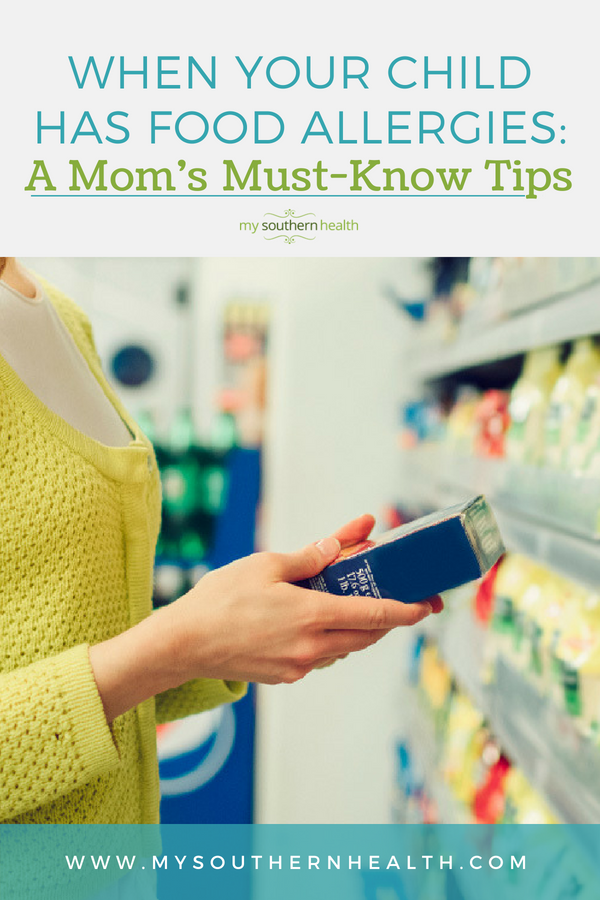A mother of a child with food allergies offers moral support – and strategies for managing food.
As a child, I don’t remember friends or family having food allergies. We didn’t have separate lunch tables at school or food restrictions for classroom parties. Maybe I just wasn’t aware. My 10-year-old son can eat anything without problems. So food allergies were unfamiliar territory for me and I never gave them much thought.
That is, until my 16-month-old son (now 4) was diagnosed with allergies – first to eggs and cows’ milk (specifically, the proteins found in milk called whey and casein), and later to peanuts and tree nuts, specifically cashews, black walnuts and pistachios. I was upset, frustrated and overwhelmed, although I had suspected allergies for several months. His body saw milk, eggs and nuts as threats, prompting his immune system to react. He breaks out in hives, his eczema flares up and his stools turn runny. We avoided all nuts until he was officially tested at 18 months old, which confirmed his nut allergy. If he were to eat the nuts he is allergic to, his body would go into an anaphylactic (life-threatening) response, and we’d have to administer epinephrine.
‘Super 8’ a problem for many children
Our family isn’t alone. The “Super 8” – eggs, milk, wheat, soy, tree nuts, peanuts, shellfish and fish – account for 90 percent of food allergies. They affect 1 in every 13 children under the age of 18 in the United States, according to Food Allergy Resource & Education.
FARE’s Food Allergy Field Guide was my lifesaver at first, giving me a handy list of ingredients to avoid and items that may contain my child’s allergens. It was also handy in learning how to REALLY read food labels.
Whey, casein and egg became part of my food vernacular. I quickly learned that milk and eggs can be called by more than three dozen other names in the ingredient lists on food packaging. I spend a lot of time scrutinizing food labels. You can never be too careful. I always recheck labels of items we consistently buy, because manufacturing plants frequently change procedures or add products that are unsafe for my son.
Laws require that the “Super 8” be listed as ingredients on food items. However, food companies are not required to state if foods “may contain” an allergen or if the processing equipment could be contaminated with allergens. To be safe, many parents contact the companies, who are typically responsive.
Our family had a learning curve and had to make adjustments. After my first post-diagnosis supermarket trip, I cried.
I’m always checking: Did we use that pan for eggs or cheese? Was a dish washed properly? Did everyone wash their hands and faces before kissing him? Cross-contamination was always a concern, because my son could have reactions if he eats traces of allergens that lingered on a plate and got into his food.
At first, my family made other changes, too. Spontaneous trips to restaurants for dinner? Only if I brought food for him or read the menu. Partaking in cupcake birthday parties at daycare? Not unless I make the cupcakes.
Three years past his first diagnosis, my son can now eat baked milk, i.e. cheese pizza, and eggs baked into foods or homemade cupcakes (nuts can still be a concern if cupcakes are store-bought). His body is learning to tolerate them, and hopefully, he will soon be able to drink cows’ milk or eat eggs without any problems. He is still severely allergic to peanuts, cashews, black walnuts and pistachios. We carry an epinephrine pen everywhere we go and avoid anything that may contain those nuts.
Over time, I have found several Facebook support groups. Parents share recipes, allow each other to vent, ask questions and share how to deal with different situations, such as holiday parties and dinners as well as plans for schools. My son is retested every six months to see whether his allergic response continues to change and if he might outgrow all his food allergies.
My biggest takeaway from our experience: We’re not (and you’re not) alone.
Here are tips that helped me along the way (and I’m still learning):
- Carry a list of food allergen names. The FARE website is a good place to start.
- Never assume. Always read food labels at the store and re-check at home and before you serve the food.
- I pack “safe” foods he can eat if we’re going out or to someone’s house.
- Keep a journal of products you find that are safe for your child.
- Explore new recipes. You’d be surprised just how many delicious new dishes are waiting to be discovered that your child can eat.
This post was written by Christina Echegaray, editor of Hope magazine, a publication of Monroe Carell Jr. Children’s Hospital at Vanderbilt.


Vanderbilt’s Children’s After-Hours Clinics offer the convenience of a walk-in clinic with care provided by a board-certified pediatrician from Children’s Hospital. No appointment is necessary, but we recommend calling your pediatrician first. Learn more about services and find locations for Children’s Hospital After-Hours Clinic here.

